The Introvert Advantage: Overcoming Perceptions of Incompetence and Disengagement
A while back, a trusted VP told me his boss was concerned about his ongoing performance in their weekly executive team meeting. Specifically, he got this feedback:
“You’re not jumping into our team conversation fast enough!”
In agreement with the feedback, he shook his head and added that he hates the awkward silence in some meetings when his peers look at him, expecting him to say something.
“I hate the pressure of this, but I have a hard time processing with my mouth. I need time and quiet to think things out before I say them.”

As we started pulling this apart to problem solve, I couldn’t help but empathize. Many leaders (me included) who prefer to fully process ideas before responding can get caught off guard when others want them to move faster. This can be incredibly challenging for those of us who naturally make decisions in our heads and then speak when that idea is fully baked.
Like this VP, I struggled with this early in my educational career, but it became a more apparent issue as I crawled up the organizational chart. Yup, I was actually negatively critiqued in a performance review as being “aloof.”
As a leader, it’s important to engage in the moment. At the executive level, it’s essential.
Our Western culture typically perceives silence in one of two ways:
- The leader isn’t competent.
- The leader is disengaged.
Ironically, sometimes those who are naturally quieter are the ones thinking most deeply about the issue at hand — but then get caught off guard when asked for immediate input.
As a campus and district leader for nearly three decades, I have observed thousands of hours of meetings. I've seen many great examples and countless poor episodes of team talk. While there are several tactics to help build team cohesion and conversational turn-taking, I often return to a simple, three-step framework: question, example, and thought.
Start with a Question
One thing that interferes with leaders speaking up is needing more information to state an opinion. As a result, some of us freeze, fearful that our desire to get into the conversation might leave us saying something prematurely.
Instead, a valid starting point is to ask a clarifying question. A helpful practice is to listen through the lens of this question:
What else do I need to know to form an opinion about this?
Make a list of questions that arise as you listen. Then, once it's time for you to speak up, here's one way to begin:
Before I jump in, I have a quick, clarifying question…
Then, state your question(s) and listen to how your colleagues respond. If the answer isn't satisfactory, you may suggest additional information is needed before sharing your opinion or decision.
If your question elicits more clarity, it provides a path to say more.
I am regularly surprised by how often a clarifying question (or two) can change the entire direction of a conversation — and sometimes surface critical information that triggers a new decision or opinion. This trend is so consistent that we mandate time for clarifying questions in all our HPG Divisional Core Group coaching sessions when addressing situations that teams share.
Starting with a question before you speak up does three things:
- It gets you into the conversation.
- It provides you a moment to consider new information.
- It gets you used to jumping in.
All three will help you build the needed reps to strengthen your executive presence as an introvert.
Introducing my NEW workshop for campus leadership teams:
Equipping YOUR Executive Leaders to BUILD Higher Performance Teams
Cite an Example
You may be ready to say more once you've asked a clarifying question (or two). Rather than immediately responding with a definite end to the conversation, such as “Approved!” or “That's not going to work,” you might consider this second transitionary step.
Citing an example is a helpful way to keep the conversation moving forward while leaving open more dialogue opportunities.
A while back, I observed a strategy conversation where several leaders had begun moving in a new direction for a new campus initiative. It became clear that one team member in the room was a bit uncomfortable with her team's direction.
Rather than outright criticize the direction, the person (with valid concern) shared a detailed story about another team she'd been on that tried a similar tactic, only to see it backfire. She was willing to support a test run and suggested that her colleagues move into this decision with prudence and care.
Anybody can share a hot take, but citing a specific example addressing the topic is more credible.
Share an Initial Thought
When it's not yet time for a more definitive statement, sharing an initial thought is a helpful next step.
Many introverted leaders fail to engage in dialogue because they are concerned that anything they say will be interpreted as a final decision — or read as their entire body of thinking on a topic.
While that can happen, it's not practical to sit quietly through interactions or expect to find regular, protracted time for research and thinking. Even when this is possible, others often read consistent silence poorly and are hasty to make judgments.
That's why splitting the difference can be helpful. I've used this phrase many times when I've found myself wanting to engage in a conversation but not quite ready to be definitive:
“I have an initial thought…”
Starting that way signals that you're engaged and involved and that your thinking may still change.
Here's How it Sounds
Here's how it sounds to start if I started with a question, cited an example, and shared an initial thought.
This is (hypothetically) a team meeting to consider a new computer system.
I
first asked this question:
- Before we go to the next point, could I ask a quick clarifying question? Much has been shared about the new data system we're considering. What's unclear is what kind of training and onboarding will be required from us. Do we know what it looks like for this academic year?
The subsequent dialogue didn't elicit a clear answer, so I continued with
an example:
- A few years back, another division I led purchased a new system similar to what we are considering. This was a unilateral decision, and many of the first adopters became frustrated with the pilot edition as it had several bugs that threw excessive errors to the point that the essential data we needed was no longer trusted. This became problematic to the success of future change this team needed to manage and diminished team trust between staff and administration.
There was additional discussion, and it appeared the purchase would move forward. When I was asked if I would support it, this was my
initial thought:
- Since the plan is to move forward, my initial thought is to do a test with a smaller subgroup of the division. Suppose we do an experimental run on a volunteer basis with some creative incentives. In that case, we'll know if there's an issue before making a more significant investment and perhaps diminishing the trust of our teams.
While the team continued with the original plan, my contributions provided cautionary processing with the team adapting their plan more wisely and quickly than they otherwise might have.
Utilizing the three steps of question, example, and thought will help you consistently engage in conversations and influence what comes next.
Related Reading
- Making Your Voice Heard* by Connson Locke
- Speak Up* by Megan Reitz and John Higgins
Applications Open!
Applications are open for our new workshop – Equipping YOUR Executive Leaders to BUILD Higher Performance Teams. — But don’t delay! We are generally able to honor better schedule preferences for earlier applicants.
Through a proven framework, this highly engaging team workshop is focused on the immediate, practical ways to build Healthy Teams and Highly Reliable Systems.
If that kind of movement is essential for you and your system’s performance, I invite you to consider this limited-time offer to accelerate your leadership team development.
If you are serious about differentiating yourself from the noise of average teams, I want to hear from you. Click the button on this page that says, “Book the Workshop.” We will follow up with you to answer your questions and pencil in your preferred team workshop date.
Booking this workshop might be your wisest decision of the year. New campus teams are enrolling each month, and we look forward to having you join us!
Lock in your preferred team retreat date, and we look forward to following up with you soon!
P.S. If the timing is not right at the moment, no problem. Consider joining THE GROUP. It’s a FREE newsletter filled with fascinating and practical articles, books, and podcasts curated by Higher Performance Leaders nationwide. HERE is a recent sample of THE GROUP.
Interested in becoming an Influencer to THE GROUP? Check it out HERE and become a regular contributor to THE GROUP!
More Blog Articles



